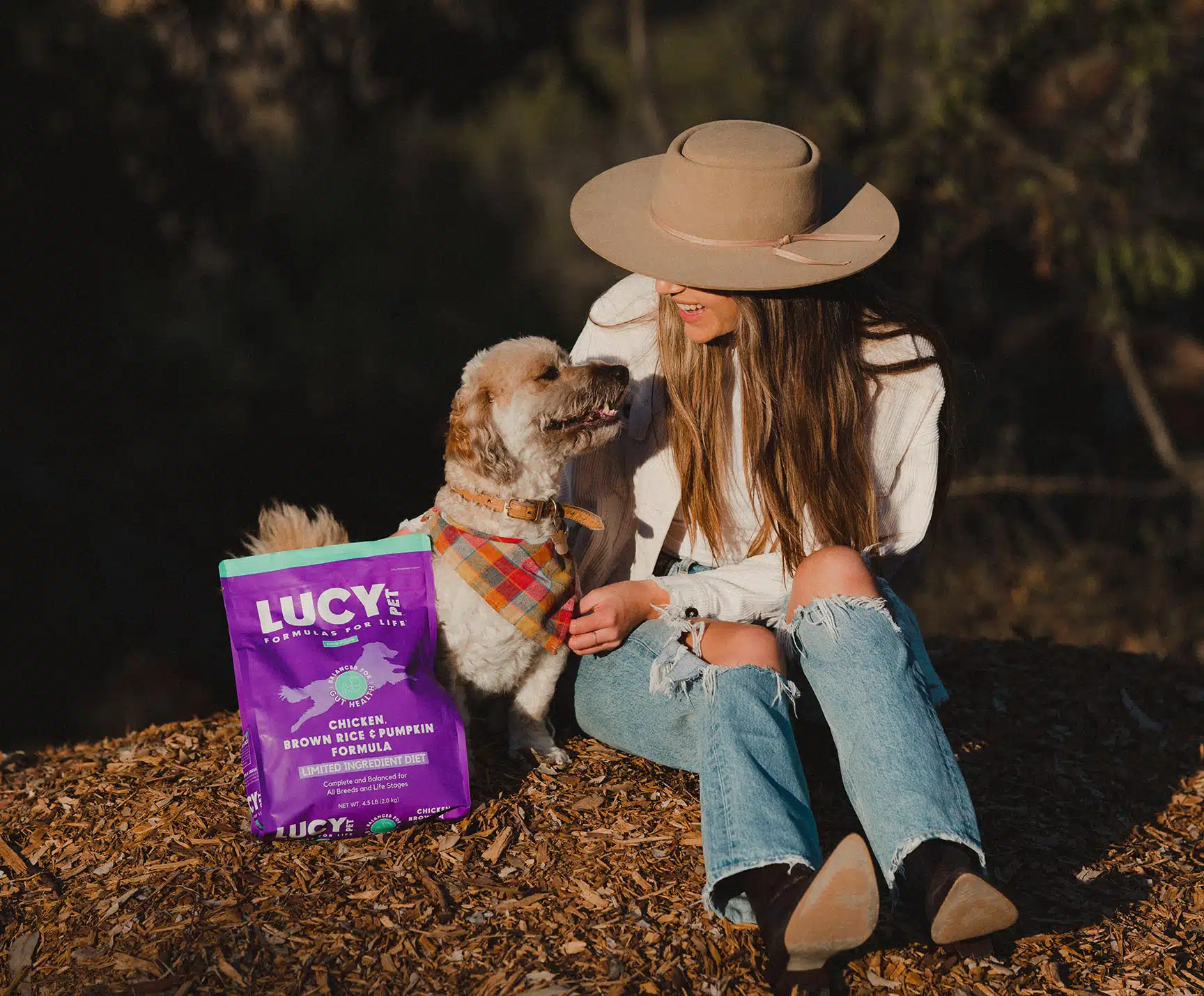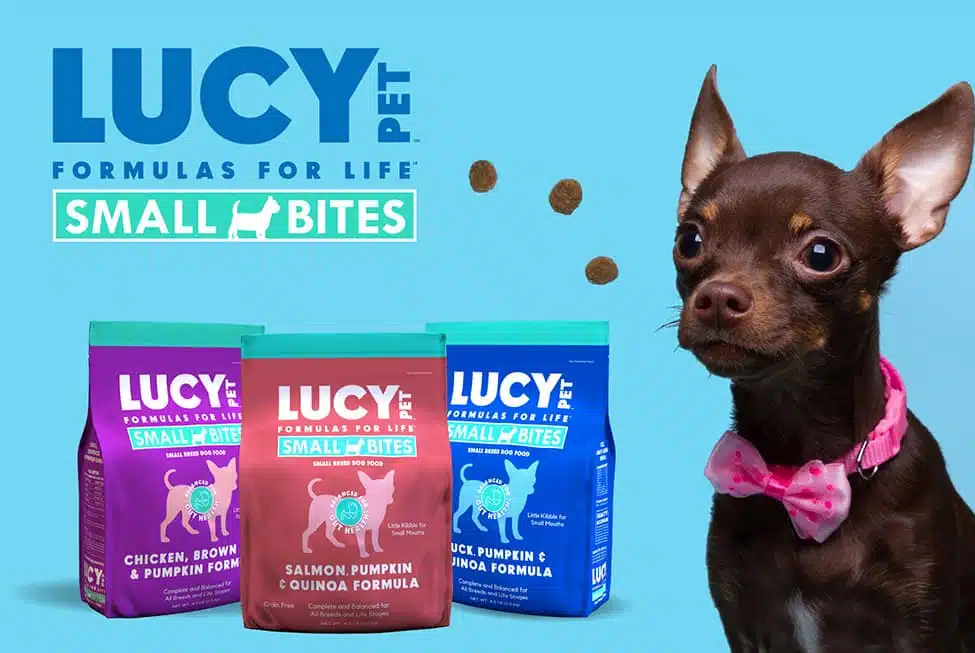On the surface, it would seem like more protein is better than less protein. Afterall, what could be wrong with eating more meat? Well, it turns out, plenty. In fact, the risks of consuming too much protein can be dangerous to the health of our pets. So much so that scientists now warn of cancer risk in pets from consuming foods with excessively high protein levels.
Dogs have specific nutrient requirements for their health and well-being, feeding excessively high protein levels over a long period of time can be unhealthy for dogs. There have been studies in humans and rats that found a correlation between high levels of ammonia from certain high protein diets and higher rates of cancer. These cancer rates were attributed to high levels of toxins created by the higher protein, such as ammonia and other nitrogen components which build up in the large intestine. Let science be your guide, not marketing hype or fads.
Dog foods marketed as “high protein” or “high meat protein” in the pet food industry are trying to mislead consumers to believe their dogs are wolves and should, therefore, be fed like a wolf, or with an “ancestral diet”. The fact is that dogs are not wolves. Our domesticated dogs descended and evolved greatly over the past 12,000 years and have significant differences in the DNA, environment, activity lifestyle, feeding frequency and even their ability to digest food. Therefore, a well-balanced diet is much more beneficial to our modern-day furry friends, rather than a high-protein diet based on questionable sources.
If you are not convinced that your dog is not the same as a wolf, consider these indisputable scientific facts:
- There are 36 parts of the genome (DNA) that differ between dogs and wolves, 10 of which play a critical role in starch digestion and fat metabolism. (A genome is an organism’s complete set of DNA, including all of its genes).
- These genetic differences in the genome between dogs and wolves include the ability of dogs to digest carbohydrates and fat (for energy), which was a crucial step in the early domestication of dogs and enabled dogs to obtain energy efficiently from food.
This means that dogs efficiently digest plants and vegetables, and their digestive system is able to process and obtain amino acids from ingredients such as quinoa, pumpkin, chickpeas, peas, and sweet potatoes, etc. Consumers should know the truth: What matters in protein is the quality of protein used, its digestibility, and how bioavailable the amino acids are when digested. Some of those high-protein foods have low-quality meats that do not digest well and do not supply the level and variety of amino acids required.
Despite this, processed and even some natural pet food diets are often formulated with excessively high protein levels.
So how much is too much protein?
AAFCO (Association of American Feed Control Officials) established these minimum protein levels:
- Adult dogs: Minimum of 18%.
- Puppies and nursing mothers: minimum of 22.5% protein
- For most dogs with a normal lifestyle, protein in excess of 30% is too high.
- For cats, protein in excess of 35% is too high.
Risks of Feeding High Protein Diets
A dog’s body can only utilize a specific level of protein that is digested and absorbed. The body utilizes what is eaten to provide energy, build and repair muscle tissue or sustain vital organ function. It may not seem logical, but once the body meets its requirements, any excess protein is disposed of, and that means the body breaks it down to release it. Along the way, the body’s organs work overtime to process this excess protein. For example, the kidneys work to break down protein and excrete components in the urine.
However, the greater concern is the link between high protein diets to cancer. When your dog eats, once the amino acid needs of the body are met, those amino acids go into the large bowel where the bacteria will ferment those amino acids. The protein or amino acids breakdown into ammonia indoles, phenols, sulfur-containing compounds and amines. These are five categories of nitrogenous compounds, several of which are carcinogenic, especially ammonia. Therefore, this excess ammonia, excess indole, excess phenols, are floating around in our pets’ bodies, which is certainly very toxic. Sadly, the large bowel can start developing cancer symptoms, all due to feeding excessively high protein levels in a dog’s diet.
Feeding your dog really high protein diets is highly inadvisable because you don’t want your dog to experience these toxins that become present in the colon.
It is important to know that any dog with a compromised immune system, or kidney disease, or even senior dogs (7 years or more) feeding a high protein diet can be very risky.
There are numerous articles and published studies that describe the relationship between the presence of ammonia, phenols, and indoles in the gut and cancer. These studies scientifically describe the relationship between high protein consumption and amino acid fermentation to toxic end-products produced in the colon. Lucy Pet has also provided copies of some of these studies on this page.
High Protein Diets Cause Yellow/Brown, Burned Grass Spots
Have you ever wondered what causes all the yellow burn spots on the grass in your yard? Well, believe it or not, it is most often from feeding high protein diets. When your dog’s body utilizes the specific levels of protein it requires, the body works to excrete the unnecessary levels. The kidneys work hard to remove the byproducts of protein to break it down to excrete in their urine. When your dog urinates on your lawn the yellow burn spots are caused by the high concentrations of nitrogen-containing compounds present in dog urine due to the kidneys processing the excessive protein in their system.
Quality over quantity
So, when you evaluate pet food companies, remember to focus on the quality of protein and not the quantity. It is very important to also understand that meat/fish protein alone does not provide all of the necessary nutrients for dogs and cats. Remember that ingredients are designed to work in combination, so your pet gets nutritional value throughout the digestion and absorption process. Meat or fish alone will not provide all the nutrients and amino acids your pet requires to live and be healthy.
Fortunately, the kibble is a marvel of modern science. Every single kibble has all the nutrients your pet needs to live and be healthy. In fact, there are over 40 essential nutrients that dogs and cats require to stay alive and thrive. Pet nutrition is complex because of how the body digests and processes what is consumed. Some nutrients digest slowly, others more quickly.
Nutritionists create a recipe using a variety of ingredients to provide proper ratios of protein, fat, fiber, and carbohydrates as well as vitamins and minerals. For optimal digestibility and bioavailability, a blend of meat or fish protein as well as plant-based proteins will give dogs and cats with the highest amount of essential amino acids, Part of the reason for using a variety of multiple sources of protein is because some ingredients can be a source for essential amino acids to build muscle, or for healthy organ function. Brands that focus on using a variety of protein sources from quality meat or fish, plus protein sourced from vegetables/plants will give your pet the best health possible.
So, when it comes to the question, “Can high protein pet food diets cause cancer in dogs and cats?” It may be best to steer clear of high protein diets for your furry loved ones.
Additional Reference Studies
![]() Protein Degradation in the Large Intestine:
Protein Degradation in the Large Intestine:
Relevance to Colorectal Cancer
![]() Microbial Fermentation of Dietary Protein:
Microbial Fermentation of Dietary Protein:
An Important Factor in Diet-Microbe-Host Interaction
![]() Resistant starch lowers fecal concentrations of
Resistant starch lowers fecal concentrations of
ammonia and phenols in humans
![]() Colorectal Carcinogenesis: A Cellular Response
Colorectal Carcinogenesis: A Cellular Response
to Sustained Risk Environment







Leave A Comment
You must be logged in to post a comment.